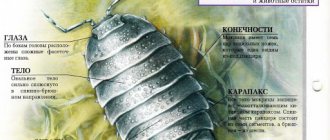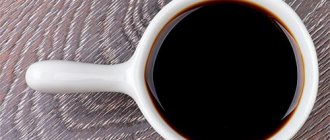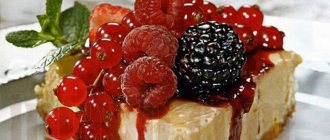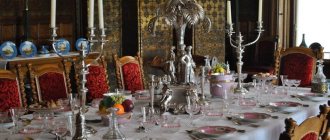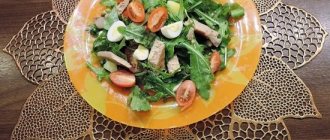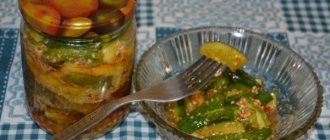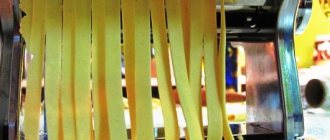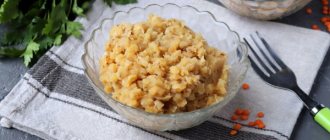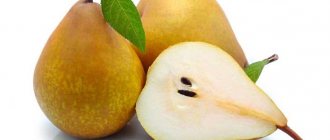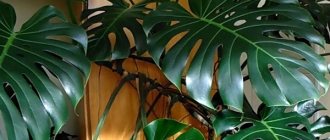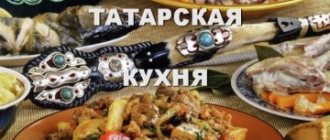What do flies like?
At home, several species of flies live near humans.
The most common house fly is the house fly. The synanthropic species is not adapted to life in the wild; it feeds on almost everything that humans eat, as well as garbage, waste, and excrement. The insect prefers liquid food because it is absorbed faster; pests love sweet dishes. They are attracted to products that show signs of rotting. There are also dishes that flies prefer, and those that are eaten if there is nothing better.
Favorite dishes:
- fruit, vegetable juice;
- jam;
- syrup;
- sugar;
- compote;
- lemonade;
- honey.
Without much enthusiasm, but if necessary, he eats a fly:
- sausage;
- porridge;
- borsch;
- soup;
- fermented milk products;
- mashed potatoes;
- candies;
- cakes;
- fruits;
- vegetables.
On a note!
Flies in the house feed on everything they can get their hands on. Initially, they absorb liquid foods, since less energy is spent on digesting such food, then they move on to solid foods. To be completely satiated, an adult needs only to drink a drop of juice and eat a bread crumb.
Feeding flies
Food in the wild
Flies in nature feed on the juices of vegetables, fruits, plants, excrement, and food waste. Products must be either ripe or rotten.
By the end of summer, another type of fly appears in a person's house - the zhigalka. They live most of their lives in the wild, but with the onset of cold nights, they move closer to civilization. Food is found either indoors or in the farm yard, sheds with animals.
This species prefers to feed on the blood of animals and humans. Unlike its domestic relative, its mouthparts end in sharp scales that gnaw through the skin. In addition to blood, burners eat food waste, excrement, fruit and vegetable juices.
Nutritional Features
The official classification of flies used by scientists is based on the feeding habits of adult insects. Based on what flies eat at home and in the wild, they are divided into:
- necrophages,
- coprophages,
- nectarivores,
- hematophages,
- polyphages.
Attention! Houseflies are polyphagous - they are omnivorous in nature. Preference is given to organic food with a distinct smell. They do not disdain rotting, decaying products.
Flies eat both liquid and solid food, but they prefer the first option. Before eating a solid product, the insect will have to spend some time producing saliva (to wet the food).
Diptera insects have no teeth; they absorb food with their proboscis. This organ is a kind of “structure” consisting of 2 tubes. The fly uses them to suck up food.
Before feasting on a particular product, the insect tastes it. For this purpose, there are special taste buds at the tips of the paws.
On the antennae of flies there is a group of neurons responsible for the sense of smell. Therefore, insects do not find food by chance, but purposefully follow a smell that is pleasant to them.
The structure of the fly's mouthparts
Non-bloodsucking house flies are more common in apartments. They have a specific structure of mouthparts designed to feed on liquids or substrates that dissolve in the creature's saliva.
The main feature of the muscoid oral apparatus is the change and hypertrophy of the lower lip of the organ. At the same time, the insect's jaws and upper lip are atrophied. Externally, the oral apparatus looks like a proboscis, attached to the sclerites of the head and jaws. They ensure the flexion of the oral organ and its position above the head.
The main part of the proboscis is the rostrum. Along its edges there are paired plates and palps, supplemented by a clypeus. Direct capture of food is carried out by the lower lip, which looks like an open gutter with a subpharyngeal gland. Through it, the fly sucks in food and secretes saliva.
House flies consume nutrient liquids and food suspensions - products of decomposition of organic matter. Semi-solid food reaches the insect after being processed by saliva. The household pest releases it onto the surface of the food, waits for it to dissolve, and then absorbs the result in liquid form.
Feeding process in flies
What do flies eat? These dipterans are considered practically omnivorous. And the lack of teeth is not a hindrance. The feeding process involves a long proboscis - a kind of tongue divided into two tubes. It is through them that the food that the fly eats is absorbed.
Feeding process in flies
This is interesting, but without exaggeration these insects can be called gourmets - they do not eat everything. On the paws of an adult individual there are taste buds that allow you to taste food before the proboscis gets involved.
What do flies eat in the house? It is most convenient for insects to eat liquid food, since solid food is more difficult to eat. The indoor snack lover spends too much energy on eating and digesting it: first, solid food is abundantly moistened with saliva, and only then penetrates the digestive tract.
Typically, these dipterans are not capable of sucking human blood, but the mouthparts of the housefly, which is very similar to a housefly, are designed in a special way. The proboscis, strongly elongated and equipped with chitinous “teeth” at the end, scrapes off the epidermis by friction and lets saliva into the puncture. The zhigalka not only feeds on blood, but also leaves irritation at the site of the bite.
House fly feeding
The common fly has no jaws; its mouthparts are a split proboscis. Through it, saliva is released onto solid residues, and after the food softens, it is absorbed. That is why it is impossible to get a bite from such an insect. The fly prefers semi-liquid or rotten food.
When the temperature drops below zero, flies go into suspended animation. According to observations, in a state of suspended animation and without food, an insect can last up to six months. An increase in temperature causes it to revive and actively search for food. The sudden appearance of an insect in early spring involuntarily leads to the thought - how many years does a fly live?
The fly's feeding method may pose a risk to human health. The paws and abdomen, framed by hairs, absorb many dangerous substances and pathogenic bacteria. In addition, microorganisms located in the insect’s stomach survive and are transferred with its saliva to unharvested food. The list of dangerous diseases carried by flies is not small. Therefore, no matter how long a fly lives in an apartment, there is a danger of it transmitting various types of infections.
This is interesting: Cockroaches - photos, types (white, American, marbled, domestic and others), how long do these insects live, do they bite
Classification of flies: types and nutritional groups
The number of species of dipterous insects, which include flies, numbers several thousand. Some of them are synanthropic, i.e. they tend to live closer to people and consume waste, while others live in the wild (forests and fields) and are constantly searching for food.
According to the organization of the feeding process, flies are divided into 3 groups:
- hematophagous (bazaar, zhigalka, tsetse, etc.) - blood-sucking, such flies in nature feed on blood, ichor and sweat, the diet of the larvae consists of excrement;
- nectarophages (wohlfart fly) - for adult individuals, plant juices serve as food, less often - animal droppings, the larvae develop and feed on organic tissues, since the female lays eggs on wounds and mucous membranes of animals and humans;
- coprophages (pasture, house) - they feed on food waste or excrement, in nature they can also consume plant juices;
- necrophages (meat), in which adult individuals feed on corpses, as well as food and meat waste, excrement;
- polyphages (indoor, etc.) - are omnivores, consuming food products and waste of plant and animal origin, as well as waste products of living organisms, discharge from wounds and mucous membranes as food.
Interesting!
Among the types of flies there are also predatory ones (ktyri), which feed on mosquitoes, cats and even bees. And there are those who eat cheese heads all their lives, their larvae - cheese flies - multiply and grow in them.
Nutrition of larvae
The diet of fly larvae also depends on the species of diptera. In nature, flies lay eggs in places where the larvae that emerge from them can immediately begin to feed, that is, closer to rotting garbage or the remains of living creatures.
The main food for housefly larvae is plant juices of rotten fruits and vegetables, excrement and decomposing food waste.
Meat-bearing species of dipterans prefer to lay eggs in rotten remains of meat, fish or offal. The hatched larvae perform the function of orderlies, since they eat large quantities of waste and carrion, due to which they quickly grow in size and develop, turning into pupae and adults (imago).
Feeding the burners
Autumn burner flies are found on all continents, but more often they settle in places where animals (cows, sheep, etc.) are kept. They appear at the end of summer and early autumn, and with the onset of cold weather they can move closer to human habitation.
The main diet for live baits is blood. To get to it, they have chitinous teeth, with which they scrape off a small piece of skin from the victim to get to the blood vessels.
Important!
They prefer the blood of cattle, and are capable of biting a person only if they accidentally enter his home. This species is dangerous for people because it is capable of carrying infections that are transmitted through the blood (ulcers, trypanosomiasis, tularemia, etc.), after introducing bacteria into the wound, they contribute to the development of sepsis (blood poisoning).
Obligate hematophages
In the larval state, such flies feed on carrion and decaying plant remains. Adults consume the blood of animals and humans, extracting it through the skin with their proboscis.
Ecology of flies
Among the flies there are both inhabitants of the wild and synanthropic species that live near humans. According to the degree of connection with humans, flies are divided into village, semi-village and pasture flies.
Village species are confined to populated areas. They live and reproduce exclusively in the village. Some species, such as the housefly (Musca domestica), are closely related to humans. They live in or near residential areas. They feed on human food, licking sweat, as well as secretions from mucous membranes and wounds. Human feces and food waste serve as sites for the development of larvae. The absence of domestic animals in the habitats of such species does not in any way affect their livelihoods. Other species, on the contrary, are confined only to those populated areas where there are livestock. The connection between such flies and humans is through domestic animals. The source of food for adults is animals, less often humans. The larvae develop in manure. An example is the blood-sucking autumn fly (Stomoxys calcitrans).
Semi-settlement or facultative-settlement species live both in populated areas and in natural conditions. An example of this group is all types of blowflies.
Pasture flies can also fly into settlements, the larvae of which develop in livestock droppings on pastures.
Classification
Annoying insects can live both in nature, obtaining their own food, or settle closer to human habitation and use those products that people forget to remove or throw away.
Let's consider what flies eat, and what groups are divided into in science depending on the organization of nutrition. The information is presented in the table. Classification of flies
| Group | a brief description of | Examples |
| Hematophagous | Adults are bloodsuckers and also consume ichor and sweat. Larvae feed on excrement | Bazarnaya Autumn burner |
| Coprophagous | Food consists of food waste and excrement of people and animals. In nature they can consume plant juices | |
| Polyphages | Omnivores: feed on waste, food products, and excrement | Room |
Most often in houses and apartments you can find house flies and house flies, but autumn flies and some other species often fly in as well.
Synanthropic flies
For humans, synanthropic flies (flies ecologically associated with human settlements) are of greatest importance (and pose the greatest danger to human health). These include, first of all, representatives of the following families: Muscidae - true flies, Calliphoridae - blue or green blowflies, Sarcophagidae - gray blowflies, Piophilidae - cheese flies, Drosophilidae - fruit flies, fruit flies, Hippoboscidae - bloodsuckers and representatives of three families gadflies: Gastric gadflies (family Gasterophilidae), Subcutaneous gadflies (family Hypodermatidae) and Cavity gadflies (family Oestridae)
Natural enemies of the tsetse fly
Photo: Tsetse fly
Tsetse has no enemies in its natural habitat. Some small birds may catch them for food, but not systematically. The fly's main enemy is man, who fiercely strives to destroy it for obvious reasons. The insect participates in the natural chain of transmission of African pathogenic trypanosomes, which are the causative agent of sleeping sickness in humans and domestic animals.
At birth, the tsetse fly is not infected with the virus. Infection with harmful parasites occurs after an individual drinks blood from an infected wild animal. For more than 80 years, various methods of combating the most dangerous insects on Earth have been developed and applied. Many of the advances in baiting techniques have come from a better understanding of fly behavior.
The importance of visual factors in attracting tsetse flies to bright objects has long been appreciated. However, it took much longer to understand the true importance of smell in attraction techniques. Artificial baits for tsetse control work by mimicking some of the organism's natural characteristics, with cattle used as an "ideal" test model
Artificial baits for tsetse control work by mimicking some of the organism's natural characteristics, with cattle used as an "ideal" test model.
The most effective way to get rid of tsetse is to sterilize the males. It consists of directed radioactive radiation. After sterilization, males who have lost their reproductive functions are released to places where the largest population of healthy females is concentrated. After mating, further reproduction is impossible.
This honeydew is most effective in areas isolated by water. In other regions it also bears fruit, but only temporarily reduces insect reproduction.
What do flies eat in the house?
Diptera polyphags, which include the familiar house flies, are not picky about food. Insects can be seen on food products, in places where animal and plant waste accumulates.
Flies are not averse to feasting on human and pet feces, as well as secretions from mucous membranes (tears, saliva) and festering wounds.
Among house flies there are also coprophages. They live in garden plots, in pastures, and also fly indoors. These flies tend to feed only on animal and human excrement.
Housefly diet
Although flies are omnivores, they give preference to sweet and tasty food and dishes.
List of foods that flies love:
- fruit and vegetable juices;
- compotes and sweet lemonade;
- sweetened tea;
- jam, honey and jams.
They can also feed on leftovers from any food products and dishes:
- sausage;
- soups, porridges, borscht;
- mashed potatoes;
- cakes and sweets, etc.
On a note!
For complete saturation, flies need very little: a bread crumb or a drop of juice. However, you need to eat often, so insects are constantly in the process of searching for food, flying from one place to another.
In the absence of fresh food, they find rotting fruits or vegetables, leftover food in the trash can, etc.
How do houseflies feed?
House flies are practically omnivorous insects. They have no teeth. A long proboscis takes part in the feeding process and performs a certain job. It is a tongue that is divided into two tubes through which the fly sucks in food.
The presence of taste buds on the paws allows you to taste the food first. And only after that the proboscis comes into play. House flies prefer liquid food, since solid food must be moistened with saliva before consumption. After softening with the help of the proboscis, the food ends up in the digestive system of the insect.
Favorite treats of house flies
Flies prefer to feed on various sweet foods in the form of liquids, as well as canned food. These include:
- Fruit and vegetable juices.
- Lemonades and compotes.
- Sweet tea.
- Jams and preserves.
- Honey.
It should be noted that flies also eat solid food, which very often remains uncleaned by people after a meal. In addition to fresh fruits and vegetables, insects also like rot in trash cans.
But these pests not only eat up leftover food from people. Their paws contain pathogenic bacteria that, if they enter the human body, can cause various diseases. Therefore, if you find flies in your home, you need to immediately take measures to combat them.
What does a blowfly eat?
As their name implies, the main diet consists of meat, lard, as well as carrion and the flesh of dead animals (in the forest or in nature). Adults and their larvae can consume other foods:
- rotten fruits and vegetables;
- grasshopper larvae, beetles.
Due to the fact that blowflies land with their paws on corpses and rotting food, they become carriers of infectious diseases. However, in nature they are beneficial, destroying rotting remains (they can completely eat the corpse of a small rodent) and accelerating the decomposition processes of animal corpses
house fly
These insects are omnivores, so feeding is not a problem for them. How do such insects feed?
- Taste buds are located on the legs, thanks to which the fly tastes the selected food.
- They suck up food using a special forked proboscis tongue, which simultaneously softens it.
- The food then enters the digestive system.
- Due to the lack of teeth, they prefer liquid food.
What do house flies eat? Some of their favorite treats include:
- Sweet tea.
- Juices and lemonades.
- Fruit juices.
- Jam, jam.
- Honey.
Often these insects are interested in solid food, but it needs to be abundantly moistened with saliva, so most often the fly will choose a sweet liquid. However, if necessary, insects will feed on fresh or rotting fruits and vegetables.
Lifespan
We looked at what the Drosophila fly and some other species of these dipterans feed on. Let's find out how long they live and whether they can live without food.
The average lifespan of fruit flies under favorable conditions is short, only 10-20 days. However, if the temperature is up to +18 °C, and there is a lot of food, pests can live for more than 2.5 months. Diptera are almost never left without food, since they find food everywhere both in human homes and in nature. If necessary, they can eat food in garbage dumps and landfills. In winter, the insect goes into suspended animation and can survive without food until the first warm days. It should be remembered that newly awakened flies are very lethargic and it will not be difficult to kill them.
In forests, dipterans have a lot of natural enemies (birds, frogs, spiders), so they rarely survive more than 10 days.
We looked at what flies eat and were convinced that these creatures are able to survive almost anywhere, since they are not picky about food.
Other species of Diptera
What a fly eats and its favorite delicacies depends on the specific species. For example:
- Drosophila feed on rotten fruits and lay eggs in them.
- Fruits are found in those apartments where sour foods are found. These are small midges that reproduce very quickly. They can also grow in baskets where onions, carrots, and other vegetables are stored.
- Carrion eats decaying food.
Thus, the question of what a fly eats cannot be answered unambiguously; it all depends on the specific species.
Some interesting facts
Among these insects there are many species with unusual feeding preferences. Let's look at what flies eat in natural conditions:
- There is a special type, cheese flies, that can breed and feed inside the cheese wheel. They are called pyophilides.
- The striped yellow-and-black syrphid, or hoverfly, a wasp-like dipteran, eats flower nectar.
- The larvae of hover flies are distinguished by an enviable appetite: during their development to an adult, each of them eats more than 2 thousand aphids.
- The dangerous Tsetse fly prefers the blood of wild animals, cattle, and people as food. The bite of this African resident can cause incurable diseases of the nervous system and immunity.
Among the flies there are also real predators, for example, ktyri, owners of a sharp poisonous sting. Their food includes mosquitoes, midges, even bees and flies. Interestingly, some types of flies are cultivated by fishing fans. Thus, the blue spring fly is specially bred on bird droppings, pig manure, its food is rotting organic remains, and the insects are also fed with sugar and dry milk.
Sources
- https://apest.ru/muhi/o-muhah/chem-pitayutsya-muhi/
- https://WikiParazit.ru/babochki-i-moshki/pitanie-muh.html
- https://komarmuha.ru/chto-edyat-muhi
- https://dezbox.ru/dezinsekciya/chem-pitayutsya-muxi-v-domashnix-usloviyax/
- https://klopkan.ru/muhi/chem-pitayutsya-muhi-v-prirode-iv-domashnih-usloviyah/
- https://notklop.ru/muhi/2-fakty/29-chem-pitayutsya-muhi/
- https://bioros.net/vsyo-obo-vsyom/chem-pitayutsya-muhi.html
- https://www.syl.ru/article/362975/chto-edyat-muhi-raznoobraznyie-lakomstva-dlya-dvukryilyih
[collapse]
Appearance
The fly belonging to this species practically no longer lives in the wild. Therefore, she is the most annoying and impudent guest in our homes in the summer-autumn period. At this time, our life is complicated by the constant struggle with these small, but very fast and resourceful insects.
House flies are most active during the daytime. The homeland of this insect is the steppe of Central Asia. But at the moment, its distribution is observed everywhere near human homes - both in rural areas and in cities.
A fly of this species is not a biting or blood-sucking insect, but nevertheless it causes significant harm to humans. Its limbs have tentacles on which various harmful bacteria and dirt accumulate, leading to infectious diseases.
The housefly's body is gray with brown tints. It consists of the abdomen, head and chest. The chest is connected to wings and three pairs of legs. On the head there are very large eyes, occupying almost the entire head, an oral cavity and short antennae. The upper part of the breast has four dark stripes, the belly has black spots in the form of quadrangles. The lower half of the head is yellow. The total body length of the fly usually does not exceed 8 mm. Males are smaller in size than females.
The female has a wider frontal part of the head, and the distance between the eyes is greater than that of the male. The flight of a fly is carried out only with the help of two front membranous transparent wings, and the hind wings (haleteres) are necessary only to maintain balance. In appearance, many types of flies are similar to the house fly, but its distinctive feature is the vein that forms a break in front of the edge of the wing. The limbs of the housefly are thin and long with suction cups for convenient movement on various surfaces. These suction cups allow her to move freely even on a vertical glass plane and on the ceiling. The fly's flight speed is very high, and it can last for several hours.
